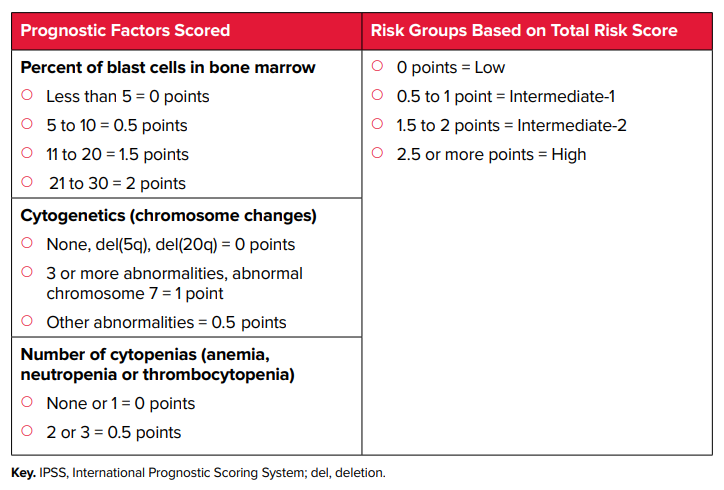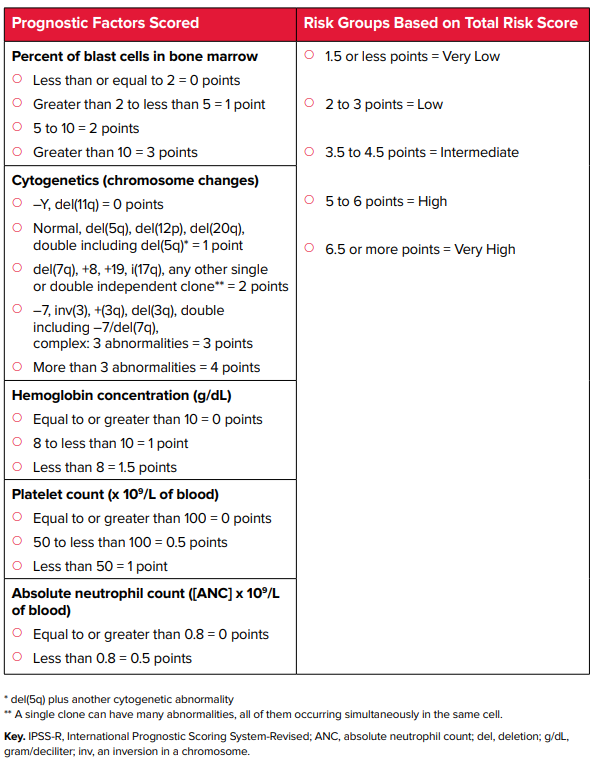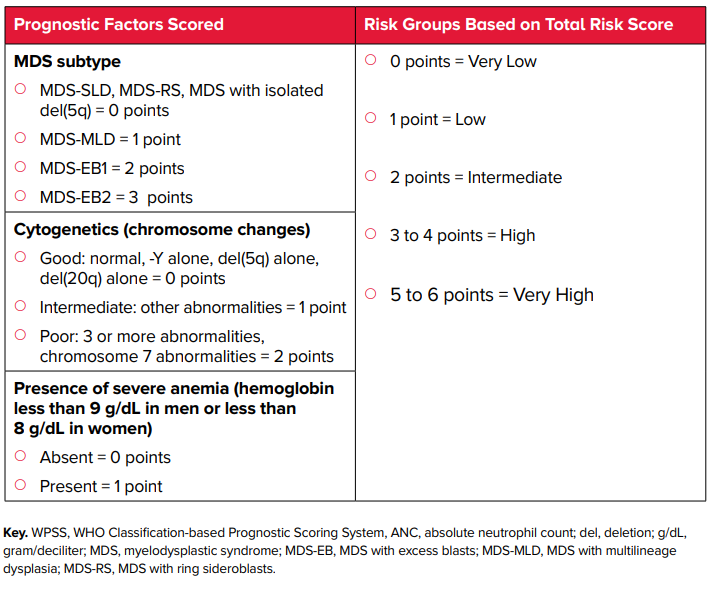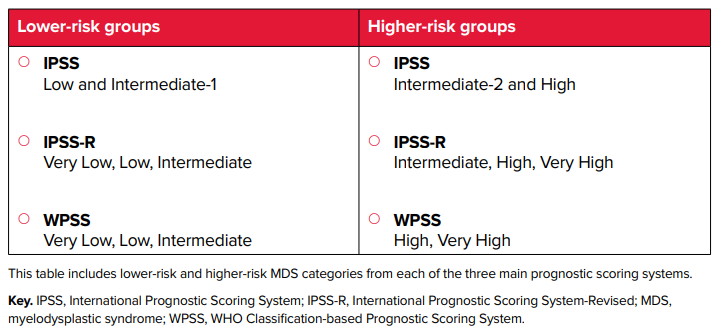Specific factors may affect the prognosis (likely outcome) of MDS, and help doctors determine when to start treatment and how intensive the treatment should be. These factors include:
- MDS subtype
- Number and severity of cytopenias (low blood cell counts)
- Percent of blast cells in the bone marrow
- Type and number of chromosome changes
Doctors use these prognostic factors to assign a risk score and risk group. Each prognostic factor is given a number based on its severity. A lower score generally indicates a better outlook. The scores for all the factors are then added together to create the overall risk score. The risk score describes how fast the disease is likely to progress, and is used to assign the patient to a particular risk group. Doctors use the information of a patient’s risk group to choose a treatment approach.
There are three main prognostic scoring systems:
- IPSS (International Prognostic Scoring System)
- IPSS-R (Revised International Prognostic Scoring System)
- WPSS (WHO classification-based Prognostic Scoring System)
International Prognostic Scoring System (IPSS)
This is the most commonly used prognostic scoring system. IPSS uses three "prognostic indicators" to predict the course of the patient's disease:
- The percentage of leukemic blast cells in the marrow
- The type of chromosomal changes, if any, in the marrow cells (cytogenetics)
- The presence of one or more low blood cell counts (cytopenias)
The International Prognostic Scoring System-Revised (IPSS-R)
The revised IPSS, known as the “IPSS-R,” covers the same disease factors as the IPSS, but the factors are identified in a more detailed way. The IPSS-R shows five disease factors:
- Blasts
- Cytogenetics
- Hemoglobin
- Platelet count
- Absolute neutrophil count
The WHO Prognostic Scoring System (WPSS)
Thee WPSS it is not used as often as the IPPS and IPSS-R. It differs from the other two systems in that it includes the MDS subtype as a prognostic factor. It also assigns a score based on the presence or absence of severe anemia.
Risk Groups
Before starting treatment, doctors group the patient’s condition into one of two risk categories: “lower-risk” or “higher-risk” MDS. Each category includes certain risk groups from each of the scoring systems. The table below shows how the risk groups are divided into these two main categories. It is important to note that prognostic systems and risk groups do not predict how MDS will respond to treatment but instead how MDS is likely to behave over time without treatment.
Lower-risk MDS tends to grow and progress slowly. It may not cause many or even severe symptoms for a long time. Hence, less intensive treatment is frequently used. In contrast, higher-risk MDS is likely to progress more quickly or become AML more quickly without treatment. It may cause more symptoms and health complications in a short amount of time. Thus, more intensive treatment is often required.
Related Links
- Download or order The Leukemia & Lymphoma Society's free booklets





